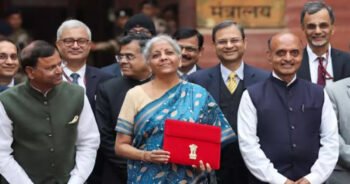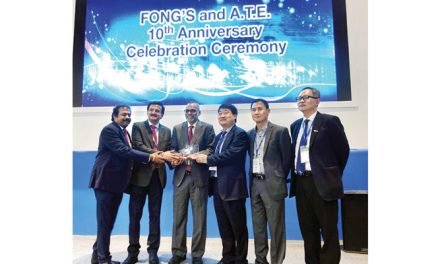 The textile and apparel industry is hopeful the interim budget will announce tax incentives and better textile infrastructure so that manufacturing and exports can be strengthened. In its pre-budget proposals, the Apparel Export Promotion Council (AEPC) has requested that tax concessions be provided to apparel manufacturers adopting ESG and other international quality standards and compliances. The textile and apparel industry is an integral part of India’s economy contributing approximately 2.3% to the GDP, 13% to industrial production and 12% to exports, according to Invest India. It is also the second largest employer in the country offering employment to 45 million people and 100 million in allied industries. The AEPC has recommended that trimmings and embellishments be included under Import of Goods at Concessional Rates of duty Rules (IGCR Rules). The industry body said that currently certain trims and embellishment items are not permitted and hence not entitled to duty exemption. “In order to maintain their brand image, foreign buyers insist on maintaining consistency and quality and avoiding use of counterfeits. Any deviation in the specification and quality results in the rejection of the shipment. Indian apparel exporters are constrained to use only those trimmings and embellishments, which are pre-approved by the buyer and these are mostly required to be sourced from overseas suppliers nominated by the garment buyers,” AEPC said. Industry players concur with AEPC’s suggestions saying that measures that support sector growth and address key challenges is the need of the hour. KK Lalpuria, Executive Director and CEO, Indo Count Industries, is hopeful that the upcoming budget will meet the diverse needs of the textile industry. “Stabilising raw material prices, strengthening supply chains and improving textile infrastructure are crucial for business empowerment and contributing to the nation’s economy. We trust that the budget will reflect these expectations, leading to a strong and sustainable future for the textile industry,” he stated. Given that the textile industry’s contribution to GDP is expected to double to 5% from the current 2.3% by the end of this decade, according to a report by CII and Primus Partners, offering budgetary incentives that can enhance competitiveness for the sector will be crucial for it to step up the momentum.
The textile and apparel industry is hopeful the interim budget will announce tax incentives and better textile infrastructure so that manufacturing and exports can be strengthened. In its pre-budget proposals, the Apparel Export Promotion Council (AEPC) has requested that tax concessions be provided to apparel manufacturers adopting ESG and other international quality standards and compliances. The textile and apparel industry is an integral part of India’s economy contributing approximately 2.3% to the GDP, 13% to industrial production and 12% to exports, according to Invest India. It is also the second largest employer in the country offering employment to 45 million people and 100 million in allied industries. The AEPC has recommended that trimmings and embellishments be included under Import of Goods at Concessional Rates of duty Rules (IGCR Rules). The industry body said that currently certain trims and embellishment items are not permitted and hence not entitled to duty exemption. “In order to maintain their brand image, foreign buyers insist on maintaining consistency and quality and avoiding use of counterfeits. Any deviation in the specification and quality results in the rejection of the shipment. Indian apparel exporters are constrained to use only those trimmings and embellishments, which are pre-approved by the buyer and these are mostly required to be sourced from overseas suppliers nominated by the garment buyers,” AEPC said. Industry players concur with AEPC’s suggestions saying that measures that support sector growth and address key challenges is the need of the hour. KK Lalpuria, Executive Director and CEO, Indo Count Industries, is hopeful that the upcoming budget will meet the diverse needs of the textile industry. “Stabilising raw material prices, strengthening supply chains and improving textile infrastructure are crucial for business empowerment and contributing to the nation’s economy. We trust that the budget will reflect these expectations, leading to a strong and sustainable future for the textile industry,” he stated. Given that the textile industry’s contribution to GDP is expected to double to 5% from the current 2.3% by the end of this decade, according to a report by CII and Primus Partners, offering budgetary incentives that can enhance competitiveness for the sector will be crucial for it to step up the momentum.





















